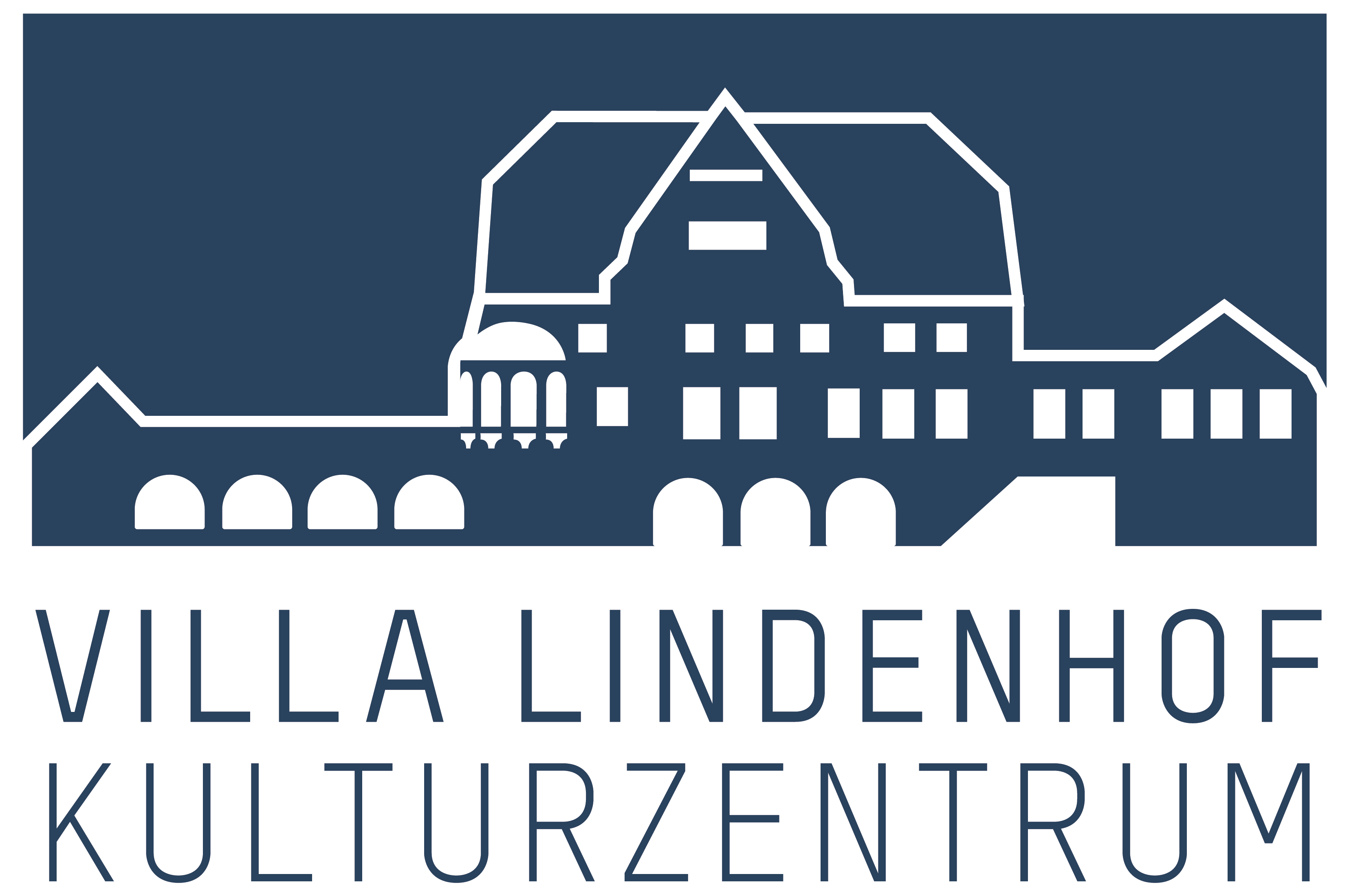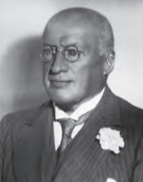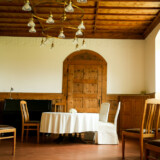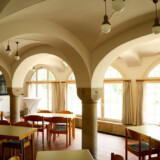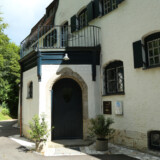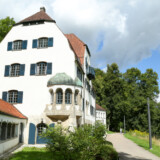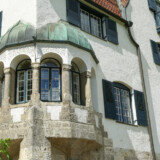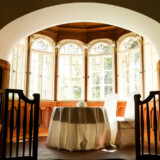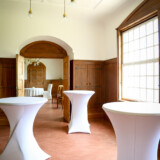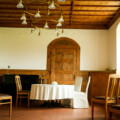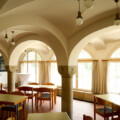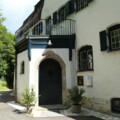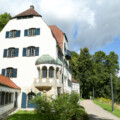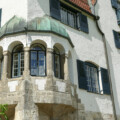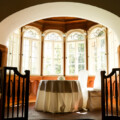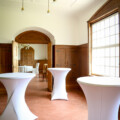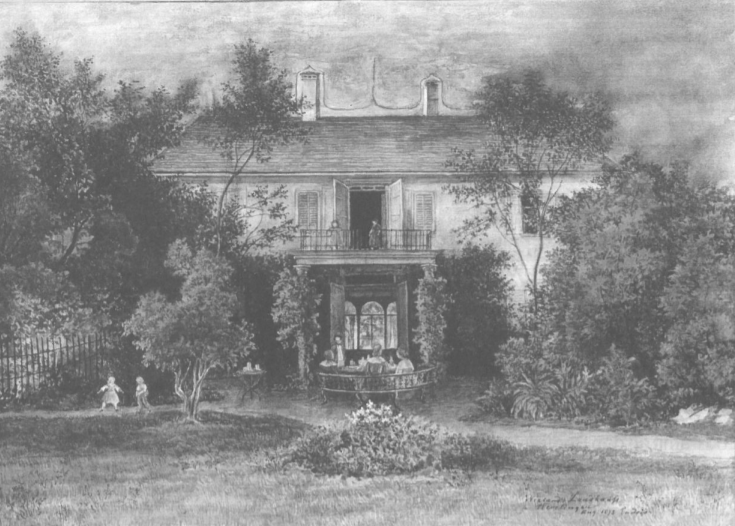
Philipp Jakob Wielands Landhouse in Herrlingen, August 1873
During the first half of the 20th century, the district Herrlingen in Blaustein served as the residence and workplace of several historically important but at the same time diametrically opposing personalities.
The newly designed permanent exhibition commemorates these individuals and portrays them appropriately. The exhibition’s state-of-the-art technology helps to describe their lives and accomplishments against the background of the very diverse societal and international political events that occurred during the first half of the 20th century.
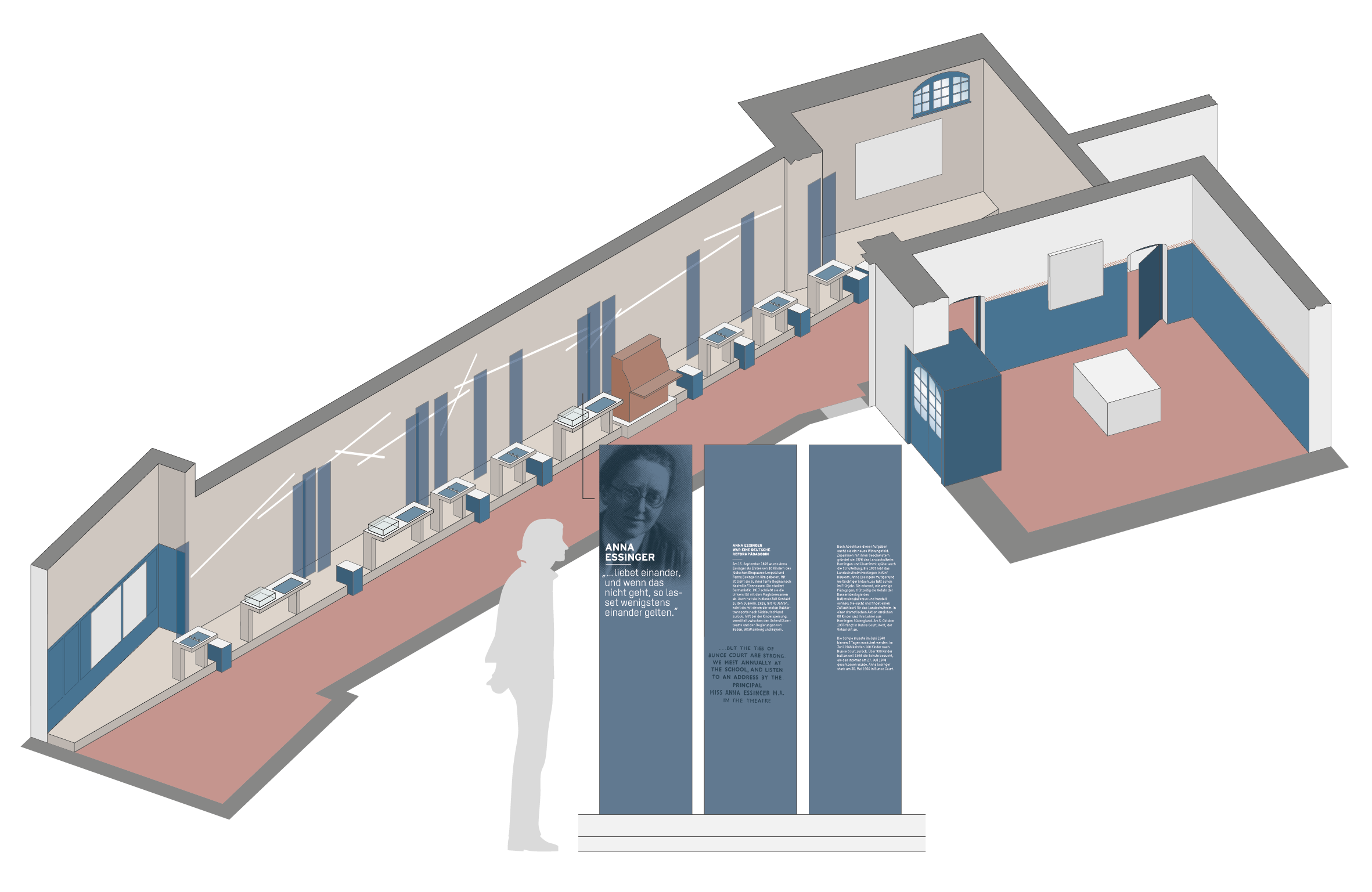
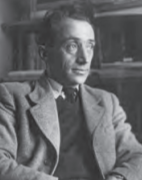
A Zionist progressive educator, he carried forward Anna Essinger’s Country Boarding School following her departure in October 1933 as a Jewish private boarding school. Rosenthal knew how to combine Jewish traditional, Zionistic, and humanistic thinking into an educational concept that was oriented toward the future. In 1939, he closed the school and left Herrlingen for Palestine.
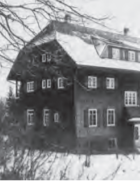
It was set up in 1939 on the premises of the disbanded Jewish Country Boarding School. During 1941, it was occupied by 150 forcibly interned Jewish senior citizens from many parts of Baden-Württemberg who lived there in cramped quarters. Compulsory homes for the aged, such as the one in Herrlingen, were established throughout the entire German Reich to make the deportation of their occupants to the extermination camps as inconspicuous as possible.
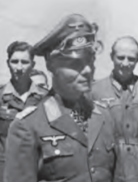
To find a safe haven for his family in the face of the approaching Red Army, General Field Marshal Erwin Rommel moved in October 1943 from Vienna (Neustadt) to Herrlingen. At first, Rommel was present in various battle zones. After being wounded on the Western front, he returned in the late summer of 1944 on convalescent leave to Herrlingen. Disgraced in Hitler’s eyes because of connections to the conspiracy of 20 July 1944, Rommel was confronted on 14 October in Herrlingen with the options of a trial before the People’s Tribunal or suicide. To spare his family reprisal, he chose death.
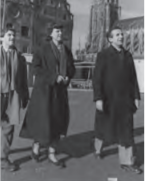
A German literary circle that convened between 1947 until 1967 at various locations in Germany at the invitation of the writer Hans Werner Richter with the intention of liberating the German language from National Socialist influence and, in so doing, introducing the renewal of German post-war literature. The second meeting convened from 7 – 9 November 1947 in Haus „Waldfrieden“ [‘Waldfrieden House’] in Herrlingen.

It was set up in 1939 on the premises of the disbanded Jewish Country Boarding School. During 1941, it was occupied by 150 forcibly interned Jewish senior citizens from many parts of Baden-Württemberg who lived there in cramped quarters. Compulsory homes for the aged, such as the one in Herrlingen, were established throughout the entire German Reich to make the deportation of their occupants to the extermination camps as inconspicuous as possible.

To find a safe haven for his family in the face of the approaching Red Army, General Field Marshal Erwin Rommel moved in October 1943 from Vienna (Neustadt) to Herrlingen. At first, Rommel was present in various battle zones. After being wounded on the Western front, he returned in the late summer of 1944 on convalescent leave to Herrlingen. Disgraced in Hitler’s eyes because of connections to the conspiracy of 20 July 1944, Rommel was confronted on 14 October in Herrlingen with the options of a trial before the People’s Tribunal or suicide. To spare his family reprisal, he chose death.

A German literary circle that convened between 1947 until 1967 at various locations in Germany at the invitation of the writer Hans Werner Richter with the intention of liberating the German language from National Socialist influence and, in so doing, introducing the renewal of German post-war literature. The second meeting convened from 7 – 9 November 1947 in Haus „Waldfrieden“ [‘Waldfrieden House’] in Herrlingen.
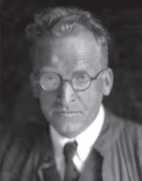
An influential Jugendstil architect from Munich. He designed and built the Villa Lindenhof (1905-1906). Along with the ‘Stadtvilla’ in Ulm (today, home to the Südwestpresse), which he also designed, the villa is among the most important Jugendstil buildings in the region. The edifice in Herrlingen manifests a realism and functionality that virtually leaves Art Nouveau behind.
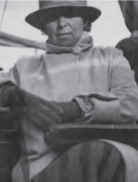
A German art historian, lyricist, translator, and philosopher. She was also one of the first female art historians to be awarded a doctoral degree in Germany. Together with her daughter Angela, whose father was Kantorowicz’s partner the philosopher and sociologist Georg Simmel, she lived in Herrlingen from 1921 to 1926.
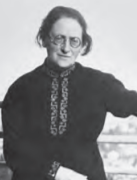
Descended from the Jewish family Essinger, she founded a home in Herrlingen in 1912 for psychologically frail, behaviorally disturbed, und developmentally handicapped pre-schoolers to school-age children, whom she raised using educationally progressive methods. When her home was forced to close in 1936, Klara Weimersheimer resettled to Palestine and started a new foster home for children there.
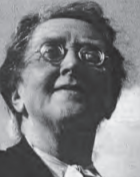
She founded her pedagogically progressive Herrlingen Country Boarding School in 1926. The new school marked a momentous hour of triumph for educational progressionists in Germany. With an upbringing that was free of fear, instruction in small groups, and a familial atmosphere, she entered uncharted territory. With courage and foresight, she resolved in 1933 to go into exile along with her faculty members and pupils to southern England, where she established the ‘New Herrlingen Country Home School’ in Bunce Court.
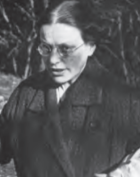
A Jewish mathematician, philosopher, and teacher dedicated to educationally progressive principles. Together with six foster children, she relocated in 1927 from the Black Forest to Herrlingen and ran her so-called ‘Waldheim’ there until 1939 while teaching mathematics in Anna Essinger’s Country Boarding School. In 1939, Käthe Hamburg emigrated to England, where she became an instructor in Anna Essingers ‘New Herrlingen School’.
Opening hours & Admission fees
Every 1st and 3rd Sunday
of the month
from 2 p.m. to 5 p.m.
Adults 3 €
Admission is free for those up to 16 years of age.
Guided tours
Guided tours through the exhibition as well as the Villa Lindenhof and the Lindenhof grounds are available upon inquiry.
Reservations can be booked with the municipal administration in Herrlingen:
Tel. 07304/802 2300 or E-Mail ovherrlingen@blaustein.de
Museum Guided tours
35 € plus admission fees
20 € for school classes; tours during school hours are possible.
Villa Lindenhof & Grounds Guided tours
35 € plus admission fees
Hiking trail in Herrlingen
The hilly side behind the villa invites you to follow in the footsteps of the historical personages by taking a circular trail with six destinations:
1 Villa Lindenhof (Wieland/Riemerschmid)
2 Gertrud Kantorowicz, Erwin Rommel
2a Anna Essinger
2b Hugo Rosenthal
3 Jewish Old Age Home
4 Waldfrieden House (meeting venue of the Group 47)
5 Käthe Hamburg
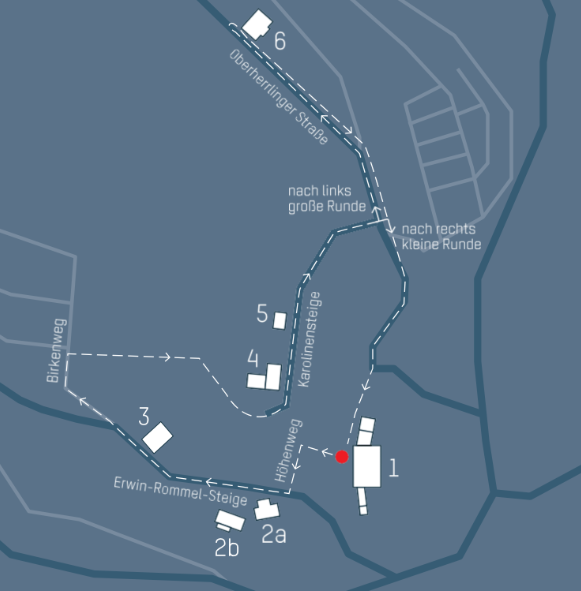
5 steps to obtaining the right reply
Questions regarding guided tours of the museum, ticket reservations, or inquiries about reserving the facilities for festivities and weddings or wedding receptions?
Please use the contact options below to obtain the appropriate reply.
Contact options
